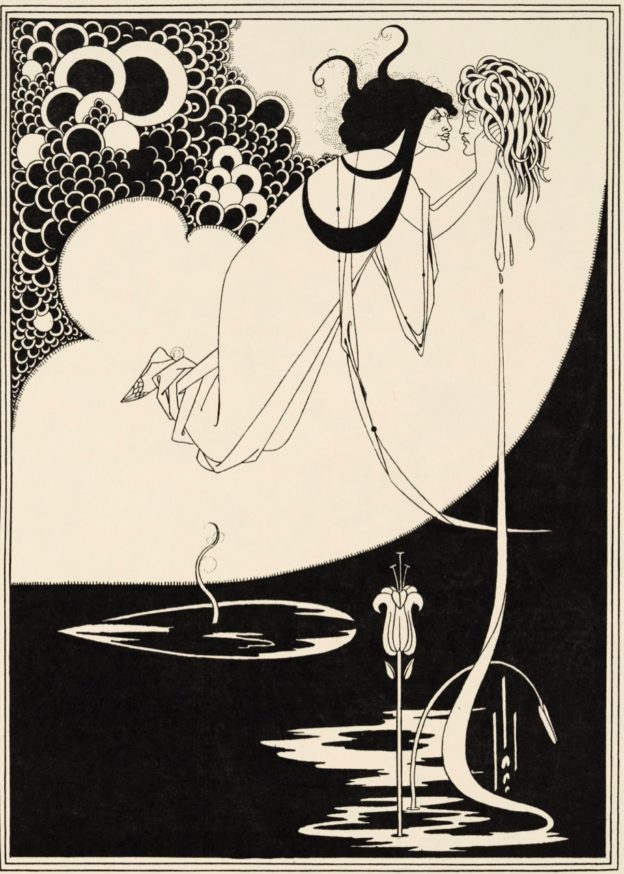

Beardsley was an emblem of his era: dandy, aesthete, decadent. But for all that emphasis on surfaces and affectation and decor, on art not just free of tendentious moralizing but on a mission to be stylishly, poetically, outrageously amoral or immoral, there was also an ethical imperative: The stormy, magnificent sea is a must all the time. No beauty without violence. No sublimity without corruption. No mores or directives or psalters or self-improvements. These are the crude outlines of the Moral Philosophy of the Exquisite…


Consider the contrast with the prevailing mores of today: Despite the immense degree of sexual freedom that characterizes our time, there is a resurgent compulsion toward stricter morality, a kind of rectitude that oddly mirrors the “repressive” Victorian era and its regime of endless self-improvement, bodily as well as intellectual, moral, and spiritual; self-help was another invention of the nineteenth century. — David Rimanelli


A video tour of Tate Britain’s suspended show AUBREY BEARDSLEY will be available this week on YouTube and the museum’s website, which also provides an illustrated exhibition guide and a short film about the artist.


AUBREY BEARDSLEY EXHIBITION TOUR
From Monday, April 13.
Tate Britain


Aubrey Beardsley, from top: The Climax, 1893, line block print on paper, from A Portfolio of Aubrey Beardsley’s Drawings Illustrating Salome by Oscar Wilde (John Lane, 1907); The Woman in the Moon, 1893, line block print on paper; Black Coffee, 1895, line block print on paper, Harvard Art Museums / Fogg Museum; Design for the Frontispiece to John Davidson’s Plays, 1894, Tate Britain; Enter Herodias, 1893, ink on paper, from A Portfolio of Aubrey Beardsley’s Drawings Illustrating Salome by Oscar Wilde; The Cave of Spleen; 1896, illustration to Alexander Pope’s The Rape of the Lock, William Sturgis Bigelow Collection, Museum of Fine Arts, Boston; The Yellow Book, vol. 1, 1894; Two Athenian Women in Distress, 1896, from The Lysistrata of Aristophanes,published by Leonard Smithers, collotype print on paper; Self-Portrait, 1892, British Museum; Lysistrata Shielding her Coynte, 1896, illustration to the frontispiece for The Lysistrata by Aristophanes, pen & ink over traces of preparatory graphite; Lysistrata Haranguing the Athenian Women, 1896; The Black Cape, 1893, line block print on paper; Frederick Evans, Aubrey Beardsley, 1893, Wilson Centre for Photography, London. Photographs of images courtesy and © Tate.




